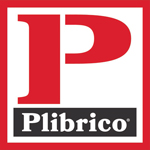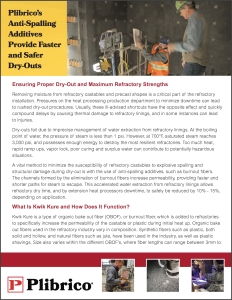Plibrico’s Anti-Spalling Additives Provide Faster and Safer Dry-Outs
Ensuring Proper Dry-Out and Maximum Refractory Strengths
Removing moisture from refractory castables and precast shapes is a critical part of the refractory installation. Pressures on the heat processing production department to minimize downtime can lead to rushed dry-out procedures. Usually, these ill-advised shortcuts have the opposite effect and quickly compound delays by causing thermal damage to refractory linings, and in some instances can lead to injuries.
Follow the link to see how the use of anti-spalling additives in refractories can be a safe and effective way to quicken water extraction and reduce the time required to dry-out refractories.
Dry-outs fail due to imprecise management of water extraction from refractory linings. At the boiling point of water, the pressure of steam is less than 1 psi. However, at 700°F, saturated steam reaches 3,000 psi, and possesses enough energy to destroy the most resilient refractories. Too much heat, rapid ramp ups, vapor lock, poor curing and surplus water can contribute to potentially hazardous situations.
A vital method to minimize the susceptibility of refractory castables to explosive spalling and structural damage during dry-out is with the use of anti-spalling additives, such as burnout fibers. The channels formed by the elimination of burnout fibers increase permeability, providing faster and shorter paths for steam to escape. This accelerated water extraction from refractory linings allows refractory dry time, and by extension heat processors downtime, to safely be reduced by 10% – 15%, depending on application.
For more information on the Plibrico Company, please contact us at 312-337-9000, or contact@plibrico.com



 Plibrico Company, LLC
Plibrico Company, LLC